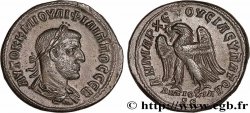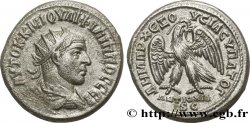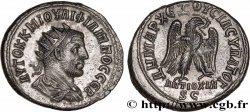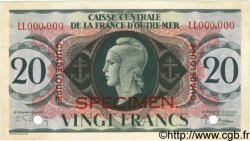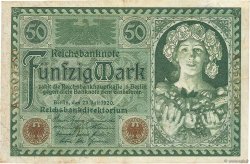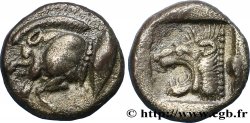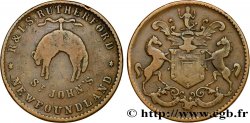E-auction 164-100530 - bpv_154073 - PHILIPPUS Tétradrachme syro-phénicien
Чтобы принять участие в торгах, вы должны войти в систему и стать подтвержденным участником аукциона. Войдите, чтобы сделать ставку. Ваш аккаунт будет подтвержден в течение 48 часов. Не ждите до закрытия торгов, чтобы зарегистрироваться.Сделав ставку на данный товар, вы вступаете в юридическое соглашение на покупку выбранного товара и нажатием кнопки «Сделать ставку» подтверждаете принятие вами условий интернет-аукционов cgb.fr.
Ставка может бить сделана только в полном эквиваленте евро. Торги закроются согласно времени, указанному в описании товара, все ставки, сделанные после закрытия торгов, учитываться не будут. Не следует откладывать предложение вашей ставки до последнего момента, так как система может не успеть обработать вашу заявку, и ваша ставка не будет принята. Более детальную информацию вы найдёте здесь: FAQ по интернет-аукционам.
БЕСПЛАТНО.
БЕСПЛАТНО.
| Оценить : | 180 € |
| Цена : | 55 € |
| Максимальная предлагаемая цена : | 59 € |
| Конец торгов : | 06 June 2016 15:16:30 |
| Участников : | 9 Участников |
Тип Tétradrachme syro-phénicien
Дата: 249
Монетный двор / Город: Antioche, Syrie, Séleucie et Piérie
Металл: billon
Диаметр: 28,00 mm
Ориентация осей монеты: 6 h.
Вес: 11,81 g.
Редкость: R3
Комментарии о состоянии
Bonne frappe bien centrée sur un flan régulier mais la surface est légèrement piquée avec une tache sombre au revers
Ссылки в каталоге: :
Происхождение:
Cet exemplaire, qui provient des plateaux d’un professionnel anglais ambulant en février 1996, est le 0421AA_002
Лицевая сторона
Аверс: описание: Buste lauré et cuirassé de Philippe Ier l’Arabe à gauche,avec épaulettes décorées, vue de trois quarts en avant (B*1).
Аверс: легенда: AUTOK K M IOUL FILIPPOS SEB, (Autokratoros Kaisaros Markos Ioulios Filippos Sebastos)
Аверс: перевод: (L’empereur césar Marc Jules Philippe auguste).
Обратная сторона
Реверс: легенда: ANTIOXIA / S|C À L’EXERGUE.
Реверс: Описание: Aigle debout à gauche, les ailes largement déployées, tête à gauche et queue à droite, tenant une couronne feuillée dans son bec.
Реверс: легенда: DHMARC - EX OUSIAS UPATOD
Реверс: перевод: (Revêtu de la puissance tribunitienne / Consul pour la quatrième fois / avec l’accord du Sénat d’Antioche).
Комментарий
Il a été nécessaire après la parution du Prieur de découper ce type général en quatre types spécifiques :
- Prieur 421 la cuirasse est décorée et les ptéryges sont apparentes
- Prieur 421AA, la cuirasse est décorée mais n'a pas de ptéryges
- Prieur 421A, la cuirasse est nue et porte des ptéryges
- Prieur 421B, la cuirasse est nue et ne porte pas de ptéryges
Il existe à Antioche de très nombreuses frappes datées d’un quatrième consulat de Philippe l’Arabe dont nous ne trouvons pas trace à Rome. Il est extrêmement regrettable que les quelques informations dont nous disposons sur le Sénat d’Antioche soient largement plus tardives (4e et 5e siècle) car les émissions de tétradrachmes laissent à penser que non seulement le Sénat d’Antioche manifestait son indépendance envers Rome en frappant de l’argent avec la titulature “SC / ANTIOXIA” mais encore qu’il avait son propre comput impérial sous Philippe.
La richesse des variantes de bustes pour des émissions de circulation à Antioche est telle que certains, Jean-Marc Doyen par exemple, ont pu considérer que l’Orient avait été, sur le plan des bustes monétaires, le laboratoire dont l’Occident va s’inspirer.
En effet, de Caracalla à Philippe, les variantes de bustes à attributs sont nombreuses et, contrairement à la pratique de Rome qui les réserve à des émissions de donativa ou de prestige, manifestement destinées à la circulation.
Ce n’est que bien plus tard, avec un décalage de trente ans, que Rome enrichira son répertoire de bustes. Persistance d’une supériorité artistique de l’Orient hellénistique sur l’Occident romain, quatre siècles après la conquête de la Grèce ? Souci de propagande exacerbé à la frontière de l’Empire, moins prégnant dans la capitale ? Influence d’empereurs sémites préoccupés de leur image de marque locale auprès de populations dont ils sont issus ? Souci oriental de la forme plus que du fond ? Graveurs libres et en concurrence à Antioche, esclaves et peu motivés à Rome ? Nous ne savons mais il n’en reste pas moins que la constatation est indiscutable.
Dès que Philippe II est proclamé auguste, il utilise toujours les titres de son père au revers mais encore adopte sa titulature de droit. Les collectionneurs débutants ont d’ailleurs des difficultés à distinguer le père du fils ; la règle est simple : le père a toujours une ride qui barre le front, le fils toujours un front lisse.
On note que les sigma sont gravés en C.
Dans la base TSP maintenue par Michel Prieur, trois exemplaires, aucun en musée, sont maintenant répertoriés pour ce type.
It was necessary after the publication of the Prior to divide this general type into four specific types: - Prior 421 the cuirass is decorated and the pteryges are visible - Prior 421AA, the cuirass is decorated but has no pteryges - Prior 421A, the cuirass is bare and has pteryges - Prior 421B, the cuirass is bare and has no pteryges There are many strikes in Antioch dated to a fourth consulate of Philip the Arab of which we find no trace in Rome. It is extremely regrettable that the little information we have on the Senate of Antioch is much later (4th and 5th century) because the issues of tetradrachms suggest that not only did the Senate of Antioch demonstrate its independence from Rome by minting money with the title “SC / ANTIOXIA” but also that it had its own imperial computus under Philip.
The wealth of variants of busts for circulation issues in Antioch is such that some, Jean-Marc Doyen for example, were able to consider that the East had been, in terms of monetary busts, the laboratory from which the West would draw inspiration..
Indeed, from Caracalla to Philip, the variants of busts with attributes are numerous and, contrary to the practice of Rome which reserves them for donativa or prestige issues, clearly intended for circulation.
It was only much later, with a gap of thirty years, that Rome would enrich its repertoire of busts.. Persistence of an artistic superiority of the Hellenistic East over the Roman West, four centuries after the conquest of Greece? Concern for propaganda exacerbated on the borders of the Empire, less pervasive in the capital? Influence of Semitic emperors concerned with their local brand image among the populations from which they came? Oriental concern for form more than content? Free and competing engravers in Antioch, slaves and little motivated in Rome? We do not know, but the fact remains that the observation is indisputable..
As soon as Philip II was proclaimed Augustus, he still used his father's titles on the reverse but also adopted his title by right.. Beginner collectors have difficulty distinguishing the father from the son; the rule is simple: the father always has a wrinkle across his forehead, the son always has a smooth forehead..
Note that the sigmas are engraved in C.
In the TSP database maintained by Michel Prieur, three examples, none in museums, are now listed for this type
- Prieur 421 la cuirasse est décorée et les ptéryges sont apparentes
- Prieur 421AA, la cuirasse est décorée mais n'a pas de ptéryges
- Prieur 421A, la cuirasse est nue et porte des ptéryges
- Prieur 421B, la cuirasse est nue et ne porte pas de ptéryges
Il existe à Antioche de très nombreuses frappes datées d’un quatrième consulat de Philippe l’Arabe dont nous ne trouvons pas trace à Rome. Il est extrêmement regrettable que les quelques informations dont nous disposons sur le Sénat d’Antioche soient largement plus tardives (4e et 5e siècle) car les émissions de tétradrachmes laissent à penser que non seulement le Sénat d’Antioche manifestait son indépendance envers Rome en frappant de l’argent avec la titulature “SC / ANTIOXIA” mais encore qu’il avait son propre comput impérial sous Philippe.
La richesse des variantes de bustes pour des émissions de circulation à Antioche est telle que certains, Jean-Marc Doyen par exemple, ont pu considérer que l’Orient avait été, sur le plan des bustes monétaires, le laboratoire dont l’Occident va s’inspirer.
En effet, de Caracalla à Philippe, les variantes de bustes à attributs sont nombreuses et, contrairement à la pratique de Rome qui les réserve à des émissions de donativa ou de prestige, manifestement destinées à la circulation.
Ce n’est que bien plus tard, avec un décalage de trente ans, que Rome enrichira son répertoire de bustes. Persistance d’une supériorité artistique de l’Orient hellénistique sur l’Occident romain, quatre siècles après la conquête de la Grèce ? Souci de propagande exacerbé à la frontière de l’Empire, moins prégnant dans la capitale ? Influence d’empereurs sémites préoccupés de leur image de marque locale auprès de populations dont ils sont issus ? Souci oriental de la forme plus que du fond ? Graveurs libres et en concurrence à Antioche, esclaves et peu motivés à Rome ? Nous ne savons mais il n’en reste pas moins que la constatation est indiscutable.
Dès que Philippe II est proclamé auguste, il utilise toujours les titres de son père au revers mais encore adopte sa titulature de droit. Les collectionneurs débutants ont d’ailleurs des difficultés à distinguer le père du fils ; la règle est simple : le père a toujours une ride qui barre le front, le fils toujours un front lisse.
On note que les sigma sont gravés en C.
Dans la base TSP maintenue par Michel Prieur, trois exemplaires, aucun en musée, sont maintenant répertoriés pour ce type.
It was necessary after the publication of the Prior to divide this general type into four specific types: - Prior 421 the cuirass is decorated and the pteryges are visible - Prior 421AA, the cuirass is decorated but has no pteryges - Prior 421A, the cuirass is bare and has pteryges - Prior 421B, the cuirass is bare and has no pteryges There are many strikes in Antioch dated to a fourth consulate of Philip the Arab of which we find no trace in Rome. It is extremely regrettable that the little information we have on the Senate of Antioch is much later (4th and 5th century) because the issues of tetradrachms suggest that not only did the Senate of Antioch demonstrate its independence from Rome by minting money with the title “SC / ANTIOXIA” but also that it had its own imperial computus under Philip.
The wealth of variants of busts for circulation issues in Antioch is such that some, Jean-Marc Doyen for example, were able to consider that the East had been, in terms of monetary busts, the laboratory from which the West would draw inspiration..
Indeed, from Caracalla to Philip, the variants of busts with attributes are numerous and, contrary to the practice of Rome which reserves them for donativa or prestige issues, clearly intended for circulation.
It was only much later, with a gap of thirty years, that Rome would enrich its repertoire of busts.. Persistence of an artistic superiority of the Hellenistic East over the Roman West, four centuries after the conquest of Greece? Concern for propaganda exacerbated on the borders of the Empire, less pervasive in the capital? Influence of Semitic emperors concerned with their local brand image among the populations from which they came? Oriental concern for form more than content? Free and competing engravers in Antioch, slaves and little motivated in Rome? We do not know, but the fact remains that the observation is indisputable..
As soon as Philip II was proclaimed Augustus, he still used his father's titles on the reverse but also adopted his title by right.. Beginner collectors have difficulty distinguishing the father from the son; the rule is simple: the father always has a wrinkle across his forehead, the son always has a smooth forehead..
Note that the sigmas are engraved in C.
In the TSP database maintained by Michel Prieur, three examples, none in museums, are now listed for this type







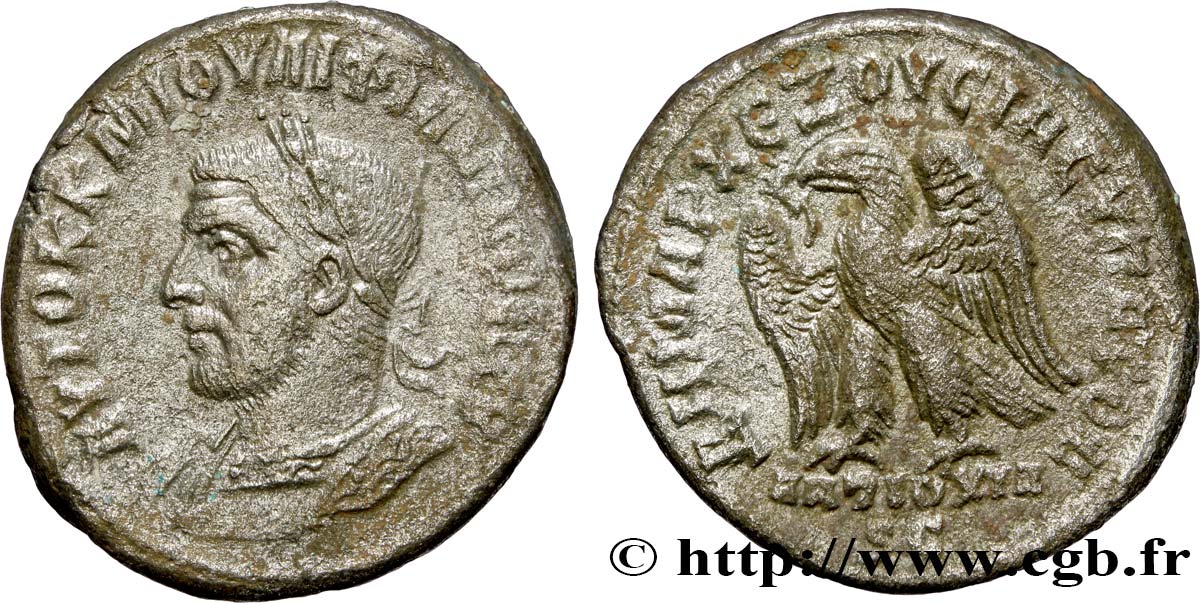
 Cообщить об ошибке
Cообщить об ошибке Распечатать страницу
Распечатать страницу Отправить мой выбор
Отправить мой выбор Задать вопрос
Задать вопрос Consign / sell
Consign / sell
 Информация
Информация